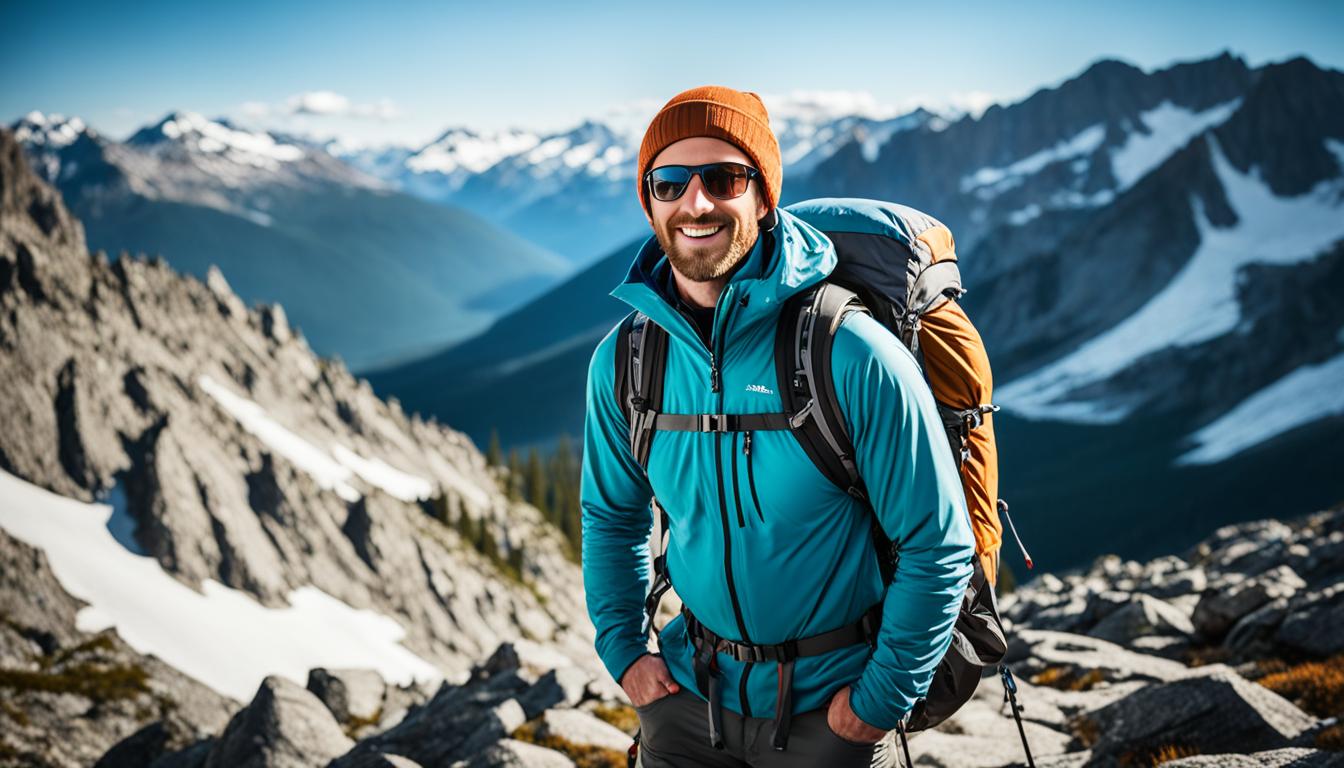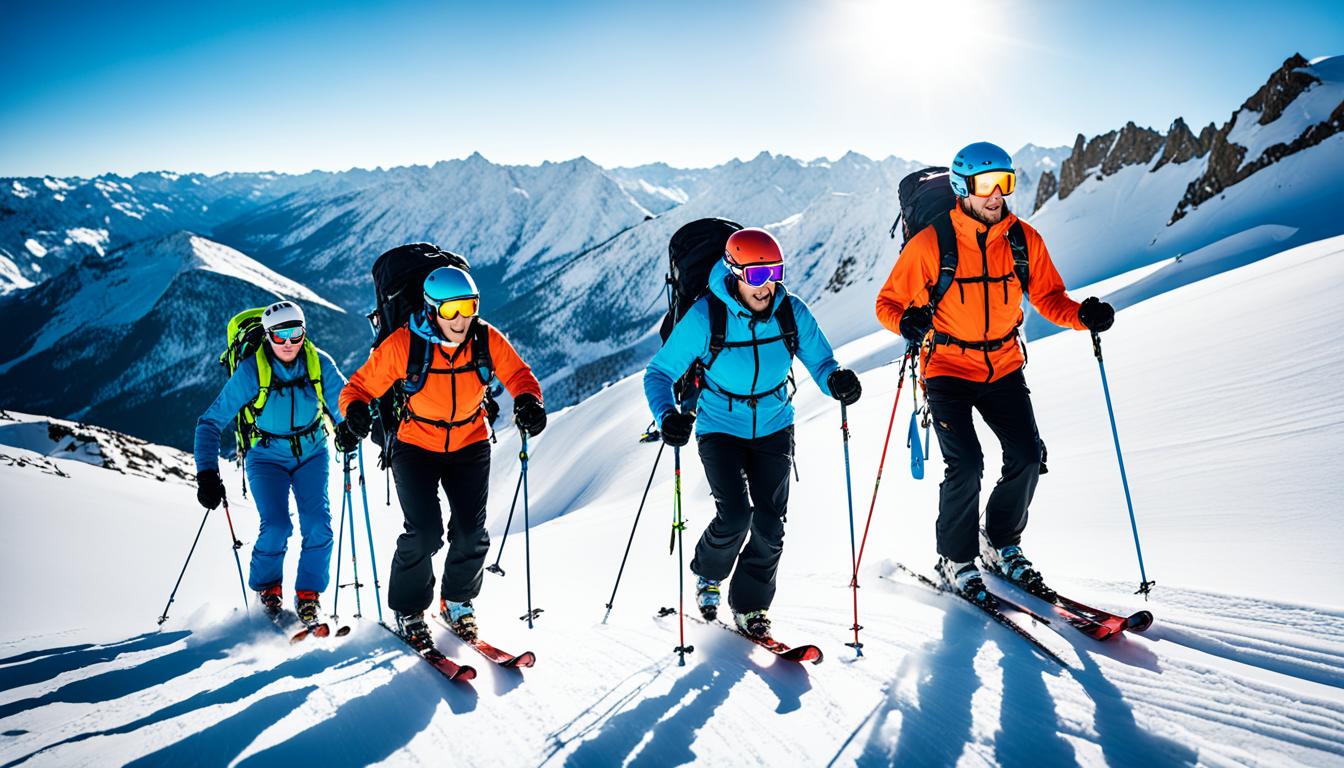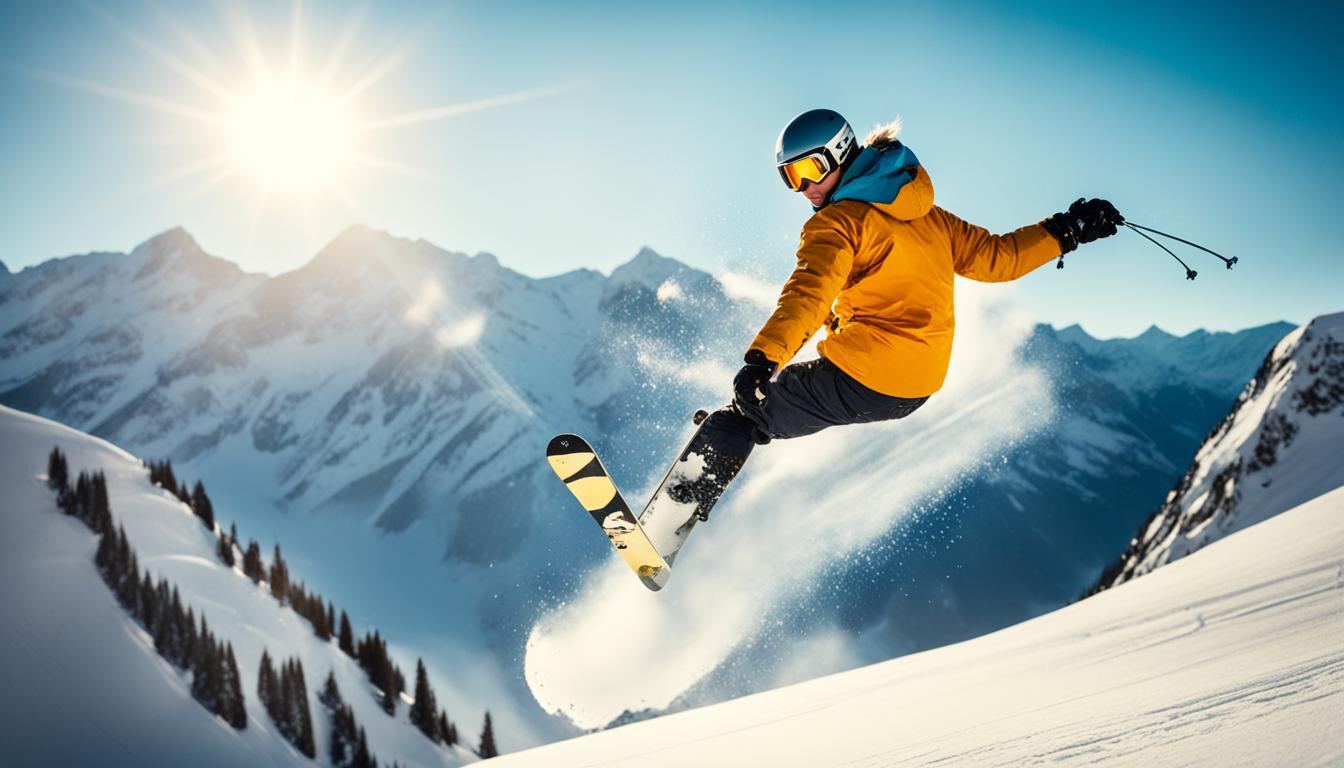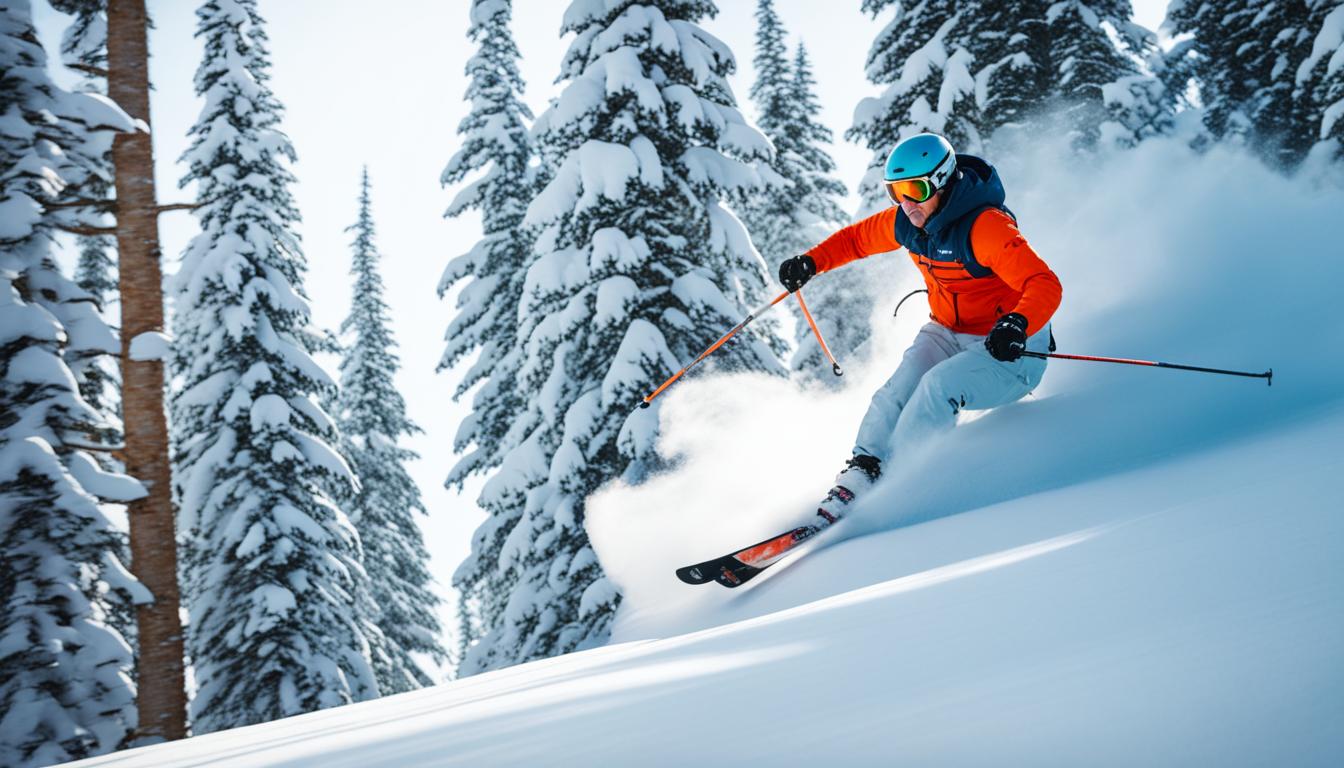Are you ready to take on the thrill and challenge of backcountry adventures? Whether you’re into backcountry skiing or flying, advanced preparation is key to ensure a safe and enjoyable experience. In this section, we’ll guide you through the essential skills and knowledge needed to master backcountry basics and be fully prepared for your outdoor adventures.
Key Takeaways:
- Backcountry basics are essential for advanced preparation and outdoor adventure readiness.
- Mastering techniques such as gliding, switchbacks, and descents is crucial for backcountry skiing.
- Ensure safety by packing extra supplies, being avalanche aware, and avoiding steep slopes.
- For backcountry flying, research and practice aircraft control skills to ensure a safe flight.
- Prioritize avalanche education and preparation to enhance backcountry skiing skills and knowledge retention.
Techniques for Backcountry Skiing
Backcountry skiing is an exhilarating way to explore untouched snowy landscapes. To navigate the varying terrains and make the most of your adventure, it is essential to master specific techniques. Backcountry touring skis, in particular, provide a comfortable and efficient means of travel amidst the wilderness.
When gliding on level ground, a technique known as kick-and-glide allows for smooth and effortless movement. It involves kicking one foot forward, pushing off with the other, and repeating the motion. This rhythmic stride enables you to conserve energy and cover long distances with ease while enjoying the beauty surrounding you.
Uphill switchbacks are indispensable for tackling steep slopes. These tight turns help you ascend while minimizing effort. As you traverse switchbacks, shift your weight to the uphill ski and use the inside edge to maintain grip. This technique allows you to conquer challenging uphill sections and ascend to breathtaking vistas.
Descending on backcountry skis requires a slightly different approach. To maintain control and regulate speed while descending, lean back slightly and employ the snowplow technique. This involves pointing your skis inward and pressuring the inside edges to create friction and slow down. Mastering this technique ensures a safe and enjoyable descent down snowy slopes.
Backcountry Touring Skis: The Ultimate Companion
When venturing into the backcountry, having the right equipment is crucial. Backcountry touring skis are specifically designed for off-piste adventures and offer a range of features to enhance your experience. These skis often have wider profiles for increased stability, along with metal edges to provide better grip and control on challenging snow conditions.
The lightweight construction of backcountry touring skis ensures that your uphill climbs are less arduous. Incorporated technologies, such as rocker profiles and camber, help optimize their performance in different terrains, including powder, crust, and mixed conditions. With these skis, you can confidently tackle the uphill switchbacks and downhill descents, allowing for an unforgettable backcountry skiing escapade.
Mastering the techniques for backcountry skiing and choosing the right equipment, like backcountry touring skis, opens up a world of thrilling adventures amidst pristine snowy landscapes.
Safety Tips for Backcountry Adventures
In the backcountry, safety should always be a top priority. Whether you’re an experienced adventurer or a beginner, taking the necessary precautions can make all the difference in ensuring a successful and enjoyable trip. Here are some essential safety tips to keep in mind:
1. Pack Extra Supplies
When heading into the backcountry, it’s crucial to bring extra supplies to prepare for any unforeseen circumstances. Pack additional water, food, and clothing to account for unexpected delays or emergencies. Having these extra provisions can provide peace of mind and help you stay comfortable even in challenging situations.
2. Carry a Survival Kit
A well-equipped survival kit is an absolute must-have for backcountry adventures. This kit should include essential items such as a first aid kit, emergency shelter, signaling devices, fire-starting tools, and navigation aids. Familiarize yourself with the contents of your survival kit and know how to use each item effectively.
3. Be Avalanche Aware
Avalanches are a serious threat in backcountry environments, particularly on steep slopes. It’s crucial to have a good understanding of avalanche awareness to minimize risks. Take an avalanche education class to learn how to assess snow conditions, recognize avalanche terrain, and make informed decisions when traveling in avalanche-prone areas.
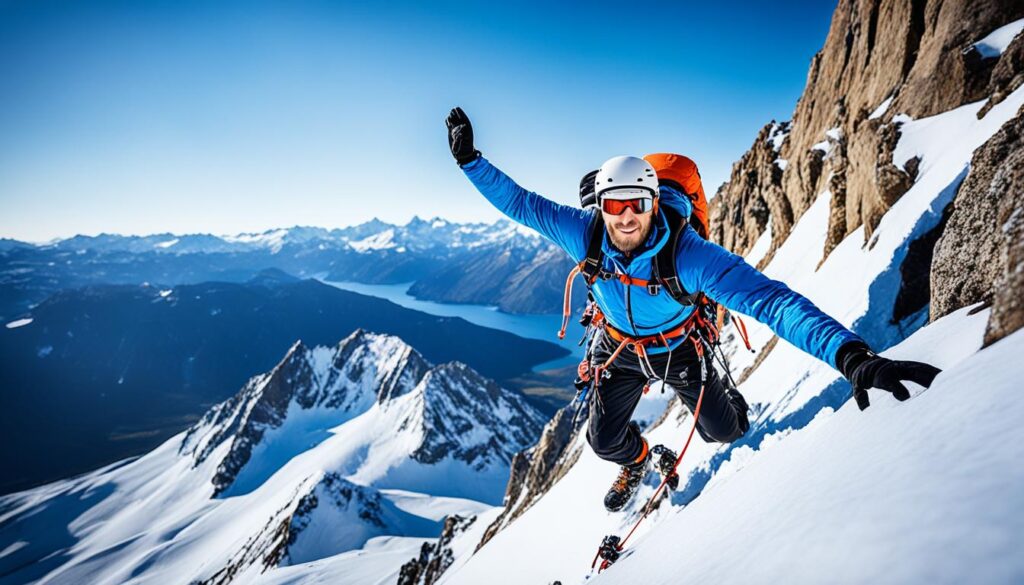
4. Avoid Exposed and Steep Slopes
When exploring the backcountry, it’s important to choose routes that minimize exposure to potential hazards. Steep slopes are particularly prone to avalanches, so it’s best to avoid them altogether. Instead, opt for safer terrain and slopes with less risk. Always exercise caution and use your judgment when navigating unfamiliar areas.
“Remember, the key to a successful backcountry adventure is thorough preparation and a safety-first mindset.”
By following these safety tips, you can enhance your backcountry experience while minimizing risks and ensuring your well-being. Keep in mind that safety is a shared responsibility, and it’s essential to look out for one another when exploring the great outdoors. Now that we’ve covered the safety basics, let’s move on to preparing for backcountry flying in the next section.
Preparing for Backcountry Flying
Backcountry flying is an exhilarating and adventurous way to explore remote and untamed landscapes. However, it requires careful preparation and skill to ensure a safe and successful flight. In this section, we will discuss the key considerations for preparing to take to the skies in the backcountry.
Research Backcountry Strips
Before embarking on any backcountry flight, it is essential to research and become familiar with the available backcountry strips in your intended area of exploration. These strips provide designated landing areas in remote locations that may lack paved runways. Take note of their specific details, including runway slopes and approaches, to better navigate these challenging terrains.
Practice Aircraft Control Skills
Mastering aircraft control skills is crucial for flying in the backcountry. It is necessary to be comfortable with low airspeeds, maintaining altitude in slow flight, and executing precise centerline alignment during landing approaches. Regular practice will ensure you have the necessary proficiency to handle the unique demands of backcountry flying.
Start with Easier Backcountry Strips
When starting your backcountry flying journey, it is advisable to begin with easier backcountry strips before progressing to more challenging ones. This approach allows you to gradually build up your skills and confidence, ensuring a safe and enjoyable experience. As your proficiency increases, you can expand your repertoire and tackle more demanding strips.
In the table below, we’ve compiled a list of backcountry strips in popular backcountry flying destinations:
| Backcountry Strip | Location | Runway Length |
|---|---|---|
| Johnson Creek | Idaho | 3,000 ft |
| Marble Canyon | Arizona | 4,500 ft |
| McCall | Idaho | 4,450 ft |
| Flying B Ranch | Idaho | 2,700 ft |
| Kenai Lake | Alaska | 4,100 ft |
Remember, always prioritize safety and proper planning when engaging in backcountry flying. By researching backcountry strips, practicing aircraft control skills, and starting with easier strips, you’ll be well-prepared for the unique challenges and rewards of backcountry flying. Now, let’s move on to the next section to explore the importance of avalanche education for backcountry skiers.
The Importance of Preparing for Avalanche Education
Avalanche education plays a vital role in ensuring the safety and success of backcountry skiers. Before embarking on an introductory avalanche class, it is recommended to have a foundation of basic backcountry skiing skills and a good level of fitness. This preparation sets the stage for an enhanced learning experience and facilitates knowledge retention.
When you enter an avalanche education course with existing backcountry skiing skills, such as attaching skins and navigating backcountry terrain, you’re already equipped with a solid foundation. This allows you to focus on the specific techniques and strategies for avalanche awareness and safety, rather than starting from scratch.
Moreover, investing in your fitness level before attending an avalanche education class can greatly benefit your learning journey. Physical fitness enhances your ability to endure longer sessions, navigate challenging terrains, and perform necessary tasks in real backcountry scenarios. By improving your fitness level, you’ll not only maximize your learning potential but also increase your safety in the mountains.
Prior knowledge and preparation significantly contribute to knowledge retention during the avalanche education process. By having a solid understanding of fundamental backcountry skiing skills and a good level of fitness, you’ll be better able to absorb and apply the information taught in the course. This knowledge retention becomes invaluable when making crucial decisions in the backcountry, ultimately ensuring a safer and more enjoyable experience.
FAQ
What are some essential skills for backcountry adventures?
Advanced preparation and skills are essential for backcountry adventures. This includes backcountry skills training, advanced outdoor skills, and wilderness survival techniques. Expert backcountry preparation is crucial for a safe and successful trip.
What techniques should I know for backcountry skiing?
Backcountry skiing requires specific techniques to navigate varying terrains. Using backcountry touring skis can provide a comfortable and efficient way to travel. On level ground, the kick-and-glide technique allows for smooth gliding. Uphill switchbacks help tackle steep slopes, while downhill descents require leaning back slightly and using the snowplow technique for speed control.
How can I ensure safety during backcountry adventures?
Safety is paramount in the backcountry. Always pack extra supplies, including water, food, and a survival kit, to prepare for any unforeseen circumstances. It is essential to be avalanche aware and take an avalanche class. Avoid exposed and steep slopes as they are more prone to avalanches. Prioritizing safety is crucial when venturing into the backcountry.
What preparations are necessary for backcountry flying?
Backcountry flying requires careful preparation and skill. Research backcountry strips and become familiar with their specific details, such as runway slopes and approaches. Practice aircraft control skills, including maintaining altitude in slow flight and precise centerline alignment. Start with easier backcountry strips before progressing to more challenging ones. Having a well-prepared plan and solid skills will ensure a safe and successful backcountry flight.
How important is avalanche education for backcountry skiers?
Avalanche education is crucial for backcountry skiers. It is recommended to have some basic backcountry skiing skills and a good level of fitness before taking an introductory avalanche class. Developing skills like attaching skins, navigating backcountry terrain, and improving fitness will enhance the learning experience during the avalanche course. Prior knowledge and preparation increase information retention and application in real backcountry scenarios.

